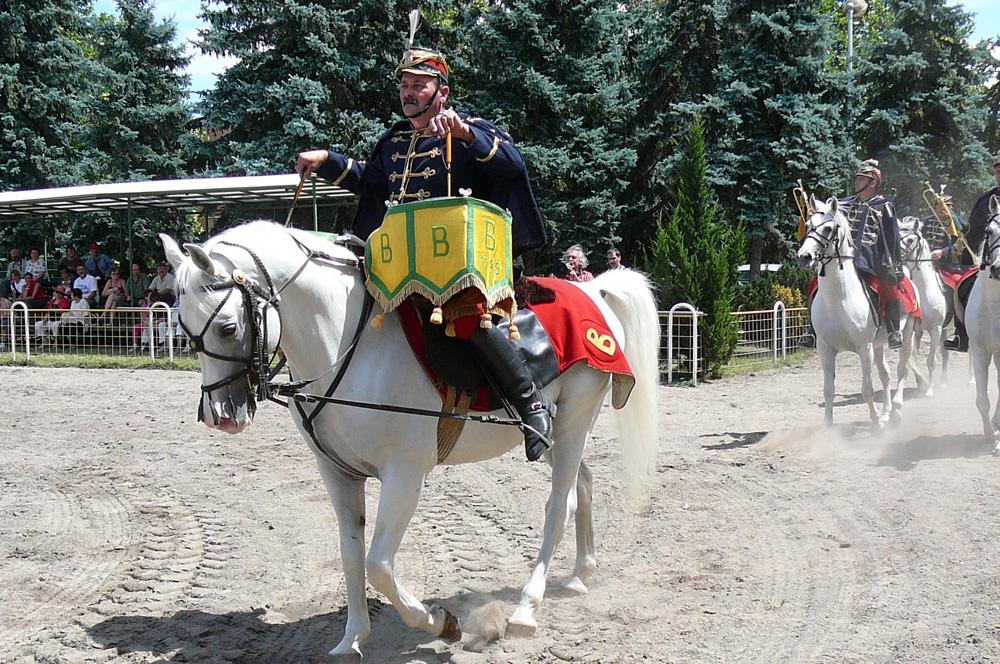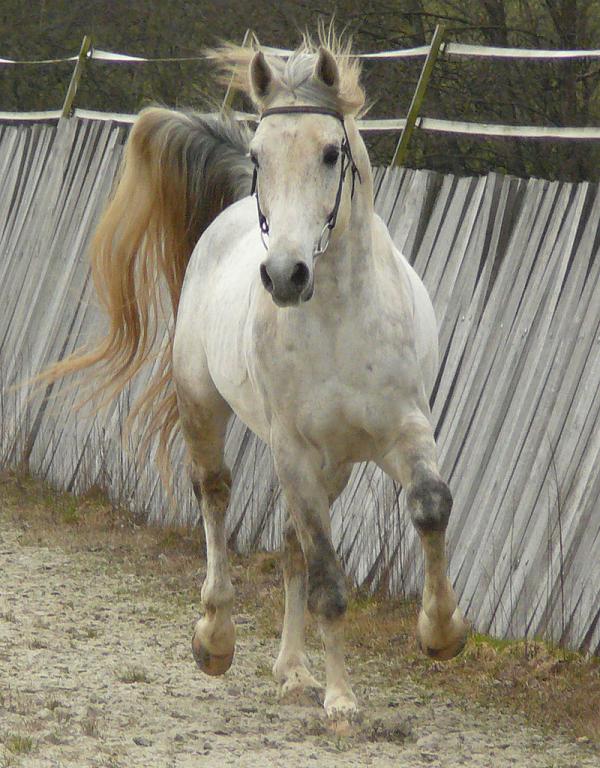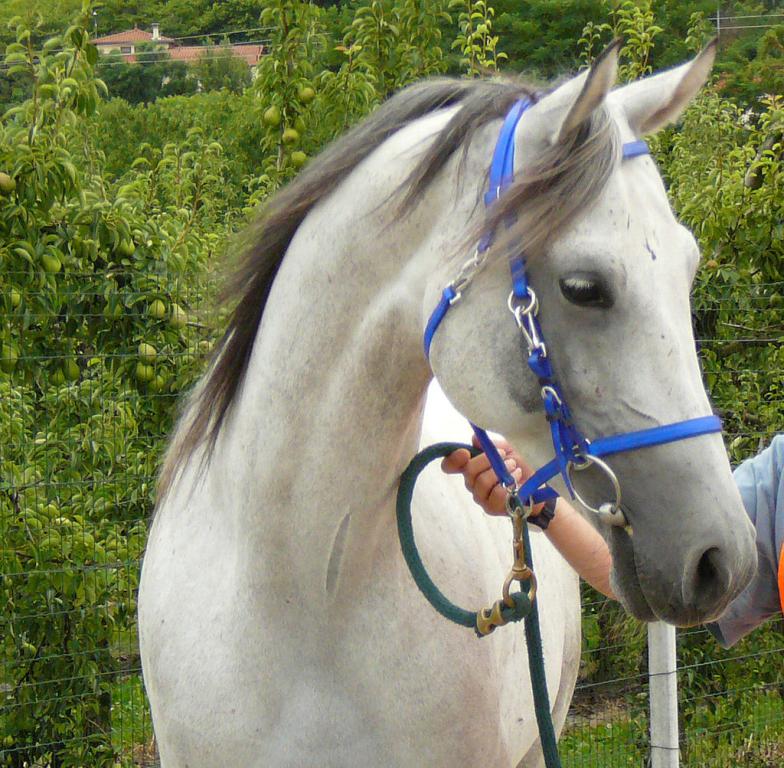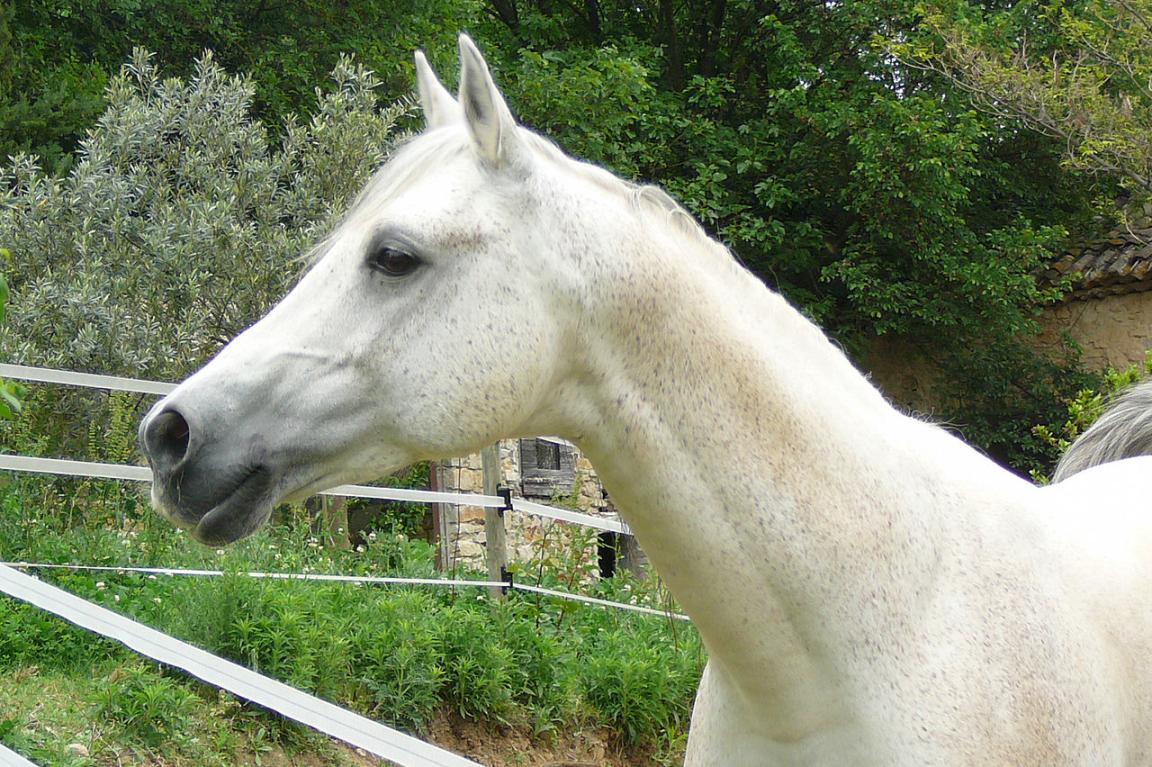
Continent: Europe
Country: Hungary
Weight: 450 – 550 kg
Height: 152 – 165 cm





The Shagya horse originates from Hungary, more precisely from the imperial stud farm of Bábolna, founded in 1789 by the Austro-Hungarian Empire. It was created from carefully selected crosses between purebred Arabians, Lipizzaners, Andalusians, and various oriental and local strains.
Its name comes from the Arabian stallion Shagya, born in Syria in 1810 and imported to Bábolna, who passed on to his offspring his qualities of endurance, nobility, and character.
Originally designed for military cavalry, it had to combine the grace and stamina of the Arabian with a larger and more powerful frame, capable of enduring long campaigns and adapting to the climates of Central Europe.
The Shagya was born at the imperial stud of Bábolna (Hungary) in the 18th century.
Over time, the Shagya spread across several European countries:
Thanks to its sporting qualities, the Shagya also gained popularity outside Europe:
The Shagya comes mainly from the Arabian Thoroughbred, but it was selectively bred from the 18th century in the Austro-Hungarian stud farms (notably Bábolna). Unlike the pure Arabian, it shows:
These features make it a horse more suited to European riders, while still keeping the elegance and stamina of the Arabian.
The Shagya has been widely used to enhance other breeds, especially in the fields of sport horses and endurance. It has contributed:
The World Arabian Horse Organization (WAHO) recognizes the Shagya as a distinct breed, confirming its importance in the global genetic heritage. It is considered a valuable alternative to the Arabian Thoroughbred in breeding programs.
Today, the Shagya is still sought after for:
The Shagya breed was born in the 18th century at the prestigious imperial stud of Bábolna, in Hungary.
The breed’s name comes from Shagya, a grey Arabian stallion born in Syria in 1810 and introduced to Bábolna in 1836.
His descendants established the desired type and gave their name to the breed.
During the 19th century, the Shagya became a cavalry horse prized for its endurance and stamina, while remaining elegant.
After the fall of the Austro-Hungarian Empire, Shagya breeding continued in several Central European countries:
In 1978, the creation of the Internationale Shagya-Araber Gesellschaft (ISG) unified national studbooks and set an international standard.
Today, the Shagya is recognized by the World Arabian Horse Organization (WAHO) as a distinct breed, not just a derivative of the Arabian Thoroughbred. It has been exported to the United States, the Middle East, and South America, while remaining a living heritage of Hungarian and Central European breeding.
The Shagya inherits the liveliness and sensitivity of the Arabian, but its European selection has given it a calmer and more cooperative nature. It is known to be reliable, attentive, and intelligent, making it a pleasant horse to work with.
This is an energetic and willing horse, endowed with great endurance. It loves movement and commits fully to work, while remaining manageable for an experienced rider.
The Shagya is distinguished by its sociability:
“The Shagya is both lively and composed, combining the energy of the Arabian with the steadiness of a half-blood, making it an ideal partner for endurance as well as leisure.”
The Shagya remains a relatively rare breed worldwide. Its numbers are modest compared to the Arabian Thoroughbred or major European sport breeds. However, it benefits from international recognition via ISG and WAHO, ensuring a lasting place in breeding programs.
The future of the Shagya is strongly linked to the discipline of endurance, where it is very competitive. Its qualities of stamina, robustness, and longevity make it a sought-after partner, especially for riders looking for an alternative to the sometimes more fragile Arabian Thoroughbred.
More and more breeders are turning to the Shagya to improve:
It could therefore play an increasing role in the breeding of endurance, light dressage, and driving horses.
With its identity between Arabian Thoroughbred and European half-blood, the Shagya embodies a rare genetic heritage. Current breeding programs emphasize:
The Shagya is renowned for its hardiness and longevity. Like the Arabian, it retains an excellent resistance to disease and a strong ability to adapt to various conditions (Central European climate, sport work, or life outdoors).
Unlike some major sport breeds, the Shagya has few serious predispositions. However, international selection aims to avoid:
As a very enduring and willing horse, the Shagya may suffer from overwork if training is not adapted (especially at high-level endurance). Careful workload management and a balanced diet are needed to avoid:
The Shagya generally enjoys a long sporting career and stays in good condition even at an advanced age. Its recovery capacity after effort is one of its great strengths.